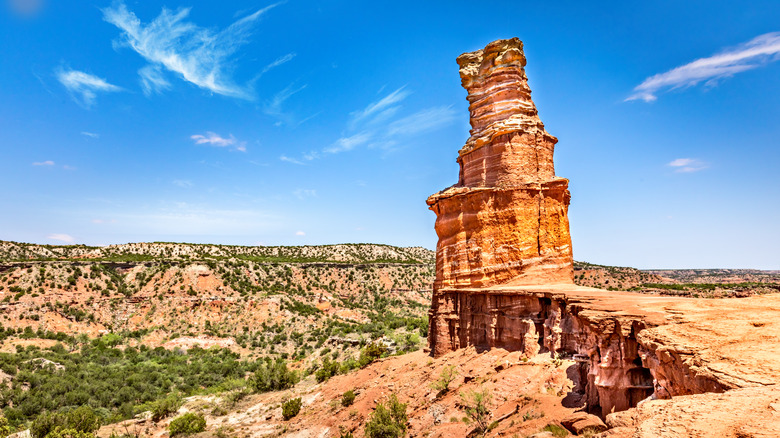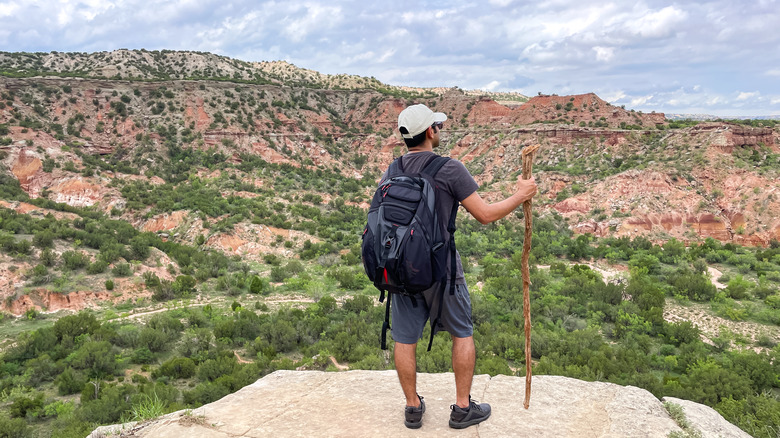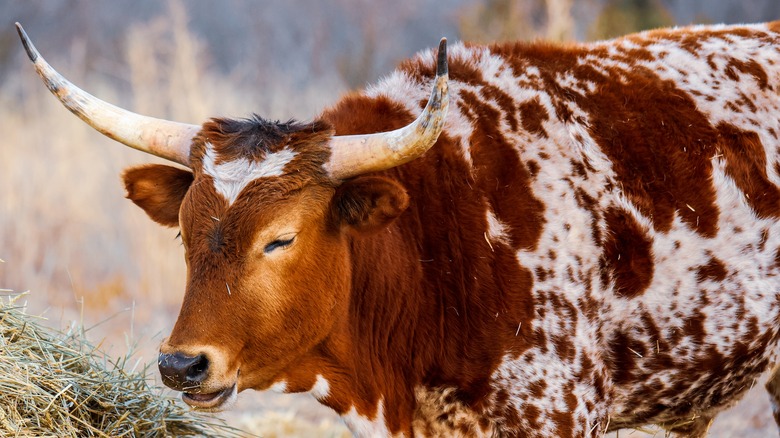The Striking And Underrated State Park Best Known As Texas' Less Crowded Grand Canyon
Texas is a place that prides itself on its size. After all, the unofficial state motto is "Everything is bigger in Texas," and a visit to the gargantuan state proves just how true this statement often is. At 268,820 square miles, it's only behind Alaska when it comes to total area, and within this sweeping scope of territory are some natural wonders that fly well under the national radar.
One such gem is Palo Duro Canyon, which is the second largest in the U.S., after Arizona's more famous Grand Canyon. Sliced into the vast scrubland of the Texas Panhandle near the city of Amarillo, this striking ravine goes on for 120 miles and is 800 feet deep in spots.
The vivid hues of the mesas, pinnacles, rock towers, and canyon walls reflect 240 million years of geological layers, and, best of all, 30,000 acres of the canyon is contained within the Palo Duro Canyon State Park. This gorgeous reserve features campsites, hiking and biking trails, equestrian paths, picnic areas, geocaches, and more. This makes Palo Duro Canyon — along with one of the country's least-visited national parks — a must-see destination for anyone keen to explore Texas' wide-open west.
Dive into a desert wonderland carved straight out of the earth
While Palo Duro Canyon began forming about a million years ago, human habitation only goes back roughly 10,000 – 15,000 years, when indigenous people arrived in pursuit of the giant bison and mammoth that gathered there in herds. Evidence of this history can be found throughout the canyon in the form of arrowheads, mortars, pictographs, and other artifacts, which visitors are advised to leave as they are.
When it comes to outdoor activities at Palo Duro, hiking tops the list. The state park boasts a network of 16 trails that take trekkers of all levels through a variety of landscapes. The Lighthouse Trail is a moderately challenging 5.9-mile out-and-back route that leads to The Lighthouse, one of Palo Duro's most iconic rock formations. The CCC trail is a short, steep walk that connects the canyon floor to the rim with amazing views on the way, while the Rock Garden Trail is a 5-mile round-trip jaunt that is among the most rewarding — and rigorous — hikes in the canyon.
Palo Duro also has several great mountain bike routes, including the Lighthouse Trail, the Capitol Peak Trail, and the slightly tricky but scenic CCC Trail. The park is also great to explore on horseback, with Old West Stables and Palo Duro Riding Stables offering guided trips into the park.
Camp under a shimmering tapestry of stars
Palo Duro Canyon State Park features a number of campgrounds for RVs and tents, options for glamping, as well as a number of stone cabins for rent, both on the rim and the floor of the canyon. While you're there, make sure to be on the lookout for wildlife such as deer, coyotes, bobcats, feral hogs, turkeys, Texas horned toads, and the iconic cattle that are part of the official Texas Longhorn herd.
In addition to daytime pursuits, Palo Duro is a great place for stargazing. The park hosts full moon hikes, star parties, and moon gazing sessions enhanced by telescopes guests can peer through. The park also attracts geocaching enthusiasts who come to try their hand at this GPS scavenger-hunt pastime, surrounded by the chromatic, otherworldly rock formations that make it such a spectacular piece of real estate.
Palo Duro can be visited in all four seasons, though the summers can be very hot and the winters cold and even snowy, as the canyon sits at an elevation of 3,500 feet above sea level. Always pack plenty of water and sun protection in summer and warm clothes in the winter, and make sure to keep track of weather conditions, as they can change rapidly, which can at times result in flash flooding.
For more unrivaled vistas in the Lone Star State, try hiking its highest peak.


